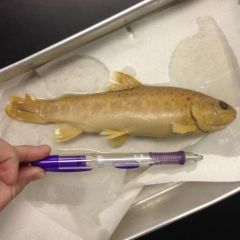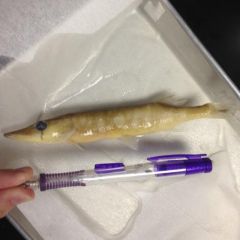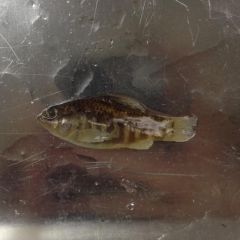![]()
![]()
![]()
Use LEFT and RIGHT arrow keys to navigate between flashcards;
Use UP and DOWN arrow keys to flip the card;
H to show hint;
A reads text to speech;
27 Cards in this Set
- Front
- Back
|
all trout have... |
an adipose fin present |
|

|
eastern brook trout Salvelinus fontinalis
|
|

|
brown trout Salmo trutta
|
|

|
rainbow trout Oncorhynchus mykiss
|
|
|
all pickerel have... |
|
|

|
grass pickerel Esox americanus
|
|

|
chain pickerel Esox niger
|
|

|
pirate perch Aphredoderus sayanus
|
|

|
sheepshead minnow Cyprinodon variegatus
|
|

|
lined topminnow Fundulus lineolatus
|
|

|
mosquitofish Gambusia affinis
|
|

|

sailfin molly Poecilia latipinna
|
|

|
largemouth bass Micropterus salmoides
|
|

|
smallmouth bass Micropterus dolomieu
|
|

|
redeye bass Micropterus coosae
|
|

|
warmouth Lepomis gulosus
|
|

|
green sunfish Lepomis cyanellus
|
|

|
bluegill Lepomis macrochirus
|
|

|
redear sunfish Lepomis microlophus
|
|

|
redbreast sunfish Lepomis auritus
|
|

|
longear sunfish Lepomis megalotis
|
|

|
black crappie Pomoxis nigromaculatus
|
|

|
white bass Morone chrysops
|
|

|
striped bass Morone saxatilis
|
|

|
yellow perch Perca flavescens
|
|

|
black-banded darter Percina nigrofasciata
|
|

|
turquoise darter Etheostoma inscriptum
|

